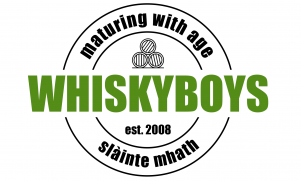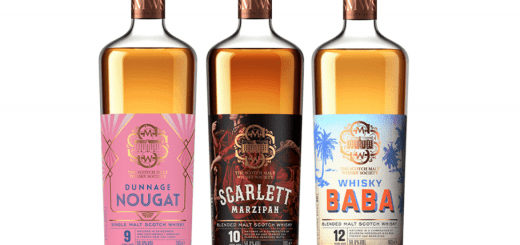Whisky it’s all in the Wood
The wood is so important there is a law about it.. Scotch Whisky must be matured in oak casks (Scotch Whisky has been defined in United Kingdom (UK) law since 1909 and one regulation is that it has been matured in an excise warehouse in Scotland in oak casks for a minimum of three years.)
Ever wondered where Scottish Distilleries get all their barrels?
Mainly from the USA and we have their Coopers Union to thank for this. American law states that all Bourbon barrels are manufactured from American white virgin oak (Quercus alba) and only used once. If you visit one of Scotland’s distilleries and manage to get a tour of the warehouses you will see many casks showing the American brands that these casks once held eg, Jack Daniels, Jim Beam, Heaven Hill, Maker’s Mark, Wild Turkey etc. These now used barrels are in demand all over the world and Scotland gets it’s fair share of this large stock of once used charred barrels. (Some only maturing bourbon for as little as two years, so they are usually in great condition when they reach Scotland.)
Scotch Whisky is also matured in sherry casks, as years ago these were plentiful as sherry was shipped to the UK in barrels and bottled here, but now sherry producers mature their sherry and bottle it at source. The outcome is that these casks are harder to obtain and so demand a much higher price than Bourbon casks.
Distilling giants have recently put huge resources into their wood management, where a few of them now own forests in America and employ Wood Managers to ensure the quality and quantity of casks are in a volume that meets each of their distilleries needs.
The differences that you get from the two oaks are:
American white oak, Quercus alba, mainly sweet and fragrant aromas, including vanilla, coconut and citrus notes.
European oak, Quercus robur, toffee and spice and these can be quite intense.
American oak being more dense, can be sawn instead of hand-split. This involves less labour and expense. Hence American oak barrels are considerably cheaper than their European counterparts.
Late in the 1990’s wood finishes were being experimented with. In the last fifteen years or so there has been a mini explosion of different finishes. Master Distillers will take fully matured Single Malts and transfer the contents into a barrel that has previously held a different type or style of Alcohol, popular choices for the distillers are; ex sherry, port, rum, red and white wine barrels and this list is not exhausted. These finishes gave the Whisky lover more aromas, flavours and colour of their chosen dram.
Every barrel is in unique, if you take sister barrels using the same wood and built by the same cooper and you then fill with new make spirit from the same distillation run, mature for an agreed period, when the master distiller comes to sample both casks the, now Whisky, will have different aromas and flavours than each other.
Anyone who has taken a distillery tour is usually advised that there are only three ingredients in Whisky, water, malted barley and yeast. This statement is correct there are only three ingredients, but, you must look at the full picture – the skill of the coppersmith that build the fantastic stills, the construction of the wash backs and the mash tuns and finally the coopers and wood managers who have the increasing responsibility of building and selecting the right wood or barrels for their spirit to be put into. It may only take a few days to produce the new make spirit that one day will become a fine Whisky, But, it is the duty of the barrel to securely hold it’s charge, impart colour and flavours that sometime in the future (maybe 3, maybe 30 years) will delight the nose and palate of Whisky lover.
Currently in Scotland :-
- 100% of the colour of your Whisky comes from the barrel
- Between 60 & 80 percent of the aromas and flavours comes from the barrel
- Over 20 million casks maturing
- Up to 95% of these are in American white oak barrels
- Approximately 8% of Scotch Whisky is kept as Single Malt, the other 92% is used for blending
So, remember, Whisky – It’s all in the wood.



